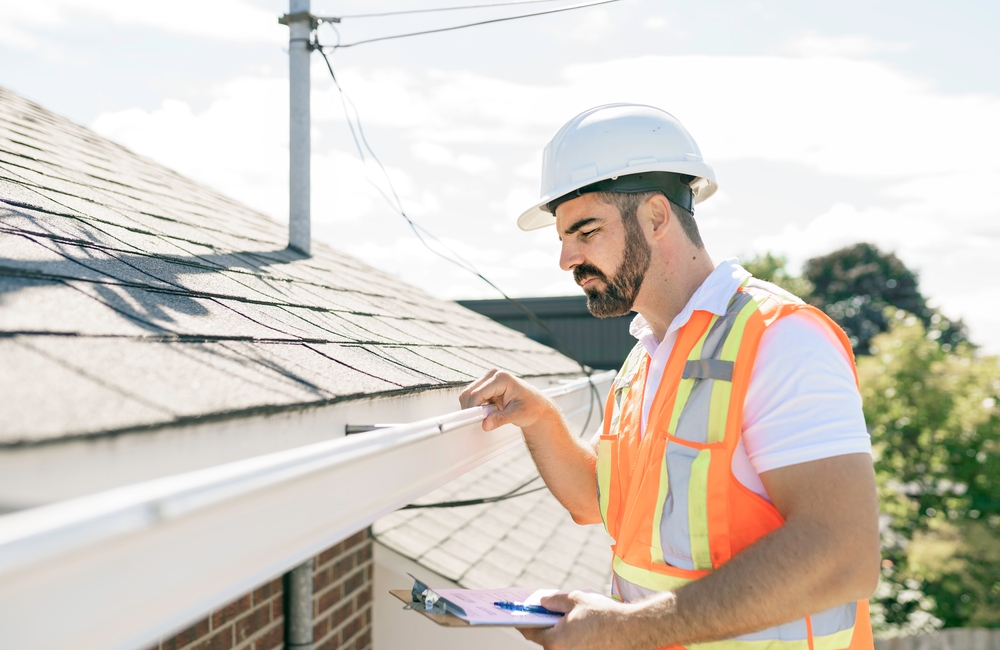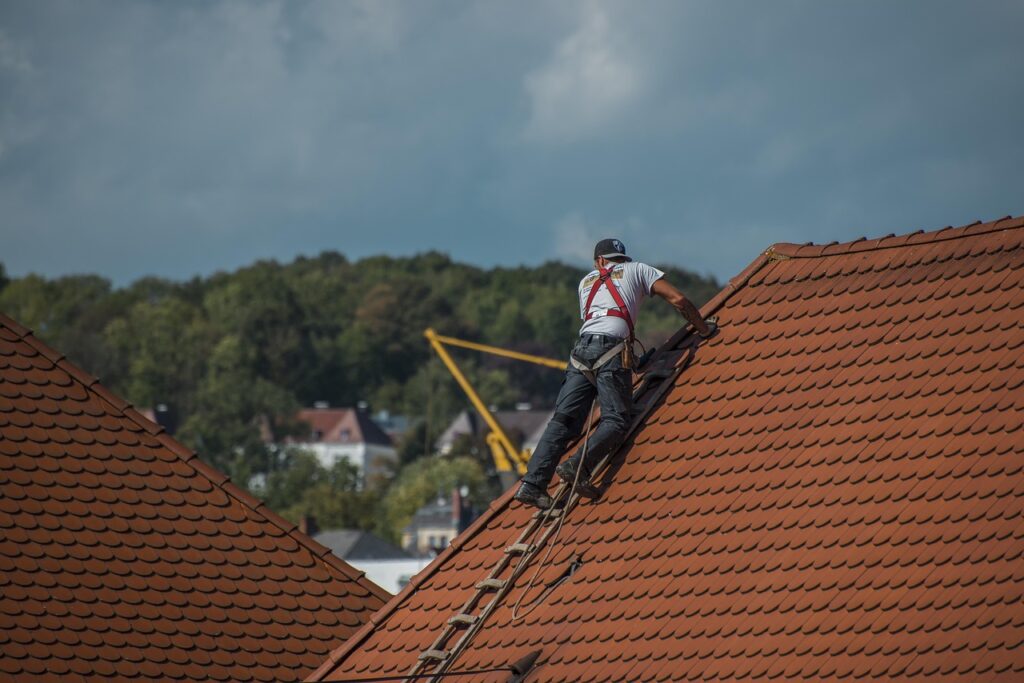
Image Source: Werner Roofing
A durable roof is not just a shelter over your head; it’s a crucial component of your home’s overall structure. It protects the interior from the elements, maintaining comfort and safety for all occupants. A sturdy roof also contributes to energy efficiency, reducing heating and cooling costs.
The longevity of a roof saves homeowners from frequent repairs and replacements, which can be costly. Investing in a robust roofing system initially can prevent unexpected expenses down the road. Furthermore, a well-maintained roof enhances the aesthetic appeal and value of a property, making it more attractive to potential buyers.
Neglecting the roof can lead to severe consequences, such as leaks, mold growth, and structural damage. These issues not only affect the integrity of the home but also pose health risks to the residents. Therefore, understanding the importance of a durable roof cannot be overstated.
Regular Roof Inspections: When and How to Do Them
Conducting regular roof inspections is vital to ensure its health and longevity. Experts recommend inspecting the roof at least twice a year, ideally in spring and fall. These seasons are optimal because they allow you to assess any damage caused by winter storms or summer heat.
When inspecting the roof, look for visible signs of damage like cracked or missing shingles, sagging areas, or clogged gutters. Also, check for moss or algae growth, which can indicate moisture retention. Using binoculars for a ground-level inspection can help detect these issues without risking a climb.
For those uncomfortable with DIY inspections, hiring a professional roofing contractor is a wise choice. Professionals can provide a thorough assessment and identify potential problems that may not be visible to the untrained eye. This proactive approach helps in addressing minor issues before they escalate into major repairs.
Identifying Common Roofing Issues
Roofs are susceptible to a variety of issues that can compromise their integrity. One common problem is leaks, often caused by damaged shingles or flashing. Water infiltration can lead to mold and mildew, causing health hazards and material decay.
Another issue is poor ventilation, which can result in heat and moisture buildup. This can lead to premature aging of roofing materials and increased energy costs. Proper ventilation systems are essential to maintain a balance between the outdoor and indoor environment.
Weather-related damage, such as hail or windstorms, can also cause significant harm. These events can dislodge shingles, leading to exposure to the elements. Regular inspections and maintenance are crucial to mitigate these risks and extend the roof’s lifespan.
Choosing the Right Roofing Materials for Your Home
Selecting the appropriate roofing materials is crucial for durability and aesthetics. The choice depends on various factors, including climate, budget, and architectural style. Common materials include asphalt shingles, metal, tile, and wood.
Asphalt shingles are popular due to their affordability and ease of installation. They offer a range of styles and colors, making them a versatile choice for many homes. Metal roofing, on the other hand, is known for its durability and energy efficiency, although it comes at a higher initial cost.
Tile and wood shingles provide a classic look but require more maintenance. Tile is ideal for warmer climates due to its heat-resistant properties. Wood offers a natural aesthetic but may not be suitable for areas prone to moisture. Consulting with a roofing professional can help homeowners make an informed decision based on their specific needs.
Proper Roof Ventilation: Why It Matters
Roof ventilation is a critical aspect of roofing that often goes unnoticed. Proper ventilation helps regulate temperature and moisture levels, preventing damage to both the roof and the home. It involves a balance between intake and exhaust vents.
Without adequate ventilation, heat and moisture can accumulate in the attic, leading to shingle damage and increased energy costs. This can also cause ice dams in colder climates, where melting snow refreezes at the roof’s edge, leading to leaks.
Installing the correct type of vents is essential for effective ventilation. Ridge vents, soffit vents, and gable vents are commonly used in various combinations to achieve optimal airflow. A well-ventilated roof contributes to improved indoor air quality and a longer-lasting roofing system.
Gutter Maintenance to Prevent Roof Damage
Gutters play a vital role in directing water away from the roof and foundation. Regular maintenance is necessary to ensure they function correctly. Clogged gutters can cause water to back up, leading to roof leaks and potential structural damage.
To maintain gutters, remove debris like leaves and twigs regularly, especially in the fall. Inspect for cracks or sagging sections that may impede water flow. Installing gutter guards can reduce the frequency of cleaning by preventing large debris from entering the system.
Professional gutter cleaning services are available for those who prefer not to tackle the task themselves. Regular maintenance not only protects the roof but also preserves the integrity of the home’s foundation, preventing costly repairs.
Effective Roof Cleaning Techniques
Keeping the roof clean is essential for maintaining its appearance and functionality. Algae, moss, and dirt can accumulate over time, affecting the roof’s surface and potentially causing damage. Regular cleaning can prevent these issues and extend the roof’s lifespan.
There are various techniques for roof cleaning, depending on the material and the level of dirt accumulation. Pressure washing is effective for some roofs but can be too harsh for others. Chemical treatments are available for removing algae and moss but should be used with caution to avoid harming the environment.
Hiring a professional roof cleaning service ensures the job is done safely and effectively. Professionals have the knowledge and equipment to clean the roof without causing damage. Regular cleaning not only enhances curb appeal but also prevents potential structural issues.
Managing Roof Repairs: DIY vs. Professional Help
When it comes to roof repairs, homeowners often face the decision of whether to tackle the job themselves or hire a professional. While DIY repairs can save money, they come with risks, especially if the individual lacks experience.
Minor repairs, such as replacing a few shingles or sealing small leaks, can be managed by homeowners with the right tools and knowledge. However, larger issues, like significant leaks or structural damage, require professional expertise to ensure proper resolution.
Professional roofers offer several advantages, including specialized skills, safety equipment, and warranties on their work. Investing in professional repairs can prevent future problems and ensure the job is done correctly. Weighing the pros and cons of each option helps homeowners make an informed decision.
Seasonal Roofing Tips for Year-Round Protection
Each season presents unique challenges for roofing, requiring specific maintenance practices. In winter, ensure the roof is free of ice dams and heavy snow. Using a roof rake can help remove snow buildup, reducing stress on the structure.
Spring is an ideal time for thorough inspections, checking for damage caused by winter storms. Address any issues promptly to prevent further deterioration. Summer requires attention to ventilation and insulation to maintain energy efficiency.
In fall, clean gutters and inspect the roof before the onset of winter. Preparing for each season’s demands ensures a durable and leak-free roof year-round. Adopting a proactive approach to seasonal maintenance can prevent costly repairs and enhance the roof’s longevity.
Investing in Roof Upgrades: Enhancing Durability and Efficiency
Investing in roof upgrades can significantly enhance a home’s durability and efficiency. Upgrades such as energy-efficient materials, better insulation, and advanced ventilation systems provide long-term benefits. These improvements not only reduce energy costs but also increase the property’s value.
Energy-efficient roofing materials, like cool roofs, reflect more sunlight and absorb less heat. This reduces the cooling load on the home, leading to lower energy bills. Enhanced insulation and ventilation systems ensure a comfortable indoor environment, regardless of the season.
Consider incorporating sustainable materials, such as recycled shingles or metal roofing, for an environmentally friendly option. Upgrading the roof is a wise investment that pays off in terms of durability, efficiency, and resale value.
Conclusion: Maintaining a Leak-Free and Long-Lasting Roof

Maintaining a leak-free and long-lasting roof requires a commitment to regular inspections, timely repairs, and proper maintenance practices. Understanding the importance of a durable roof and investing in quality materials are crucial steps in achieving this goal.
By addressing common roofing issues promptly and choosing the right materials and techniques, homeowners can ensure their roofs withstand the test of time. The integration of proper ventilation, gutter maintenance, and effective cleaning further enhances the roof’s performance.
Ultimately, a well-maintained roof provides peace of mind, protecting the home and its occupants from the elements. Make roofing maintenance a priority to enjoy a comfortable and secure living environment.
Frequently Asked Questions
1. How often should a roof be inspected?
A roof should be inspected at least twice a year, ideally in the spring and fall. Additional inspections may be necessary after severe weather events.
2. What are the signs of a roof needing repair?
Signs include missing or damaged shingles, leaks, mold growth, and sagging areas. Regular inspections help identify these issues early.
3. Can I clean my roof by myself?
While DIY roof cleaning is possible, it requires caution and the right equipment. Hiring a professional ensures the job is done safely and effectively.
4. What is the most durable roofing material?
Metal roofing is considered one of the most durable options, known for its longevity and resistance to harsh weather conditions.
5. How do I choose the right roofing contractor?
Look for licensed and insured contractors with positive reviews and experience in the type of roofing you have. Request quotes and compare services before making a decision.